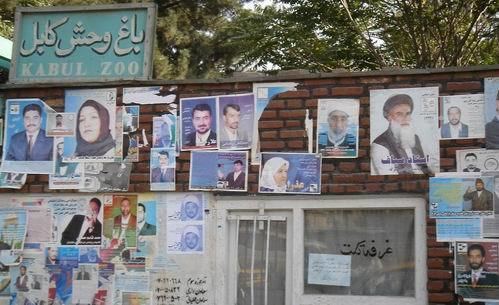Date opened 1967 Opened 1967 Phone +93 78 066 9577 | Notable animal Marjan (Lion) | |
 | ||
Address Asmayi Rd, Kabul, Afghanistan Hours Closed now Friday8AM–4:30PMSaturday8AM–4:30PMSunday8AM–4:30PMMonday8AM–4:30PMTuesday8AM–4:30PMWednesday8AM–4:30PMThursday8AM–4:30PM Similar Gardens of Babur, National Museum of Afghanistan, Hindu Kush, Qargha Reservoir, Ghazi Stadium | ||
Afghanistan kabul zoo numbers among the war s many victims
The Kabul Zoo is located in Kabul, Afghanistan, on the bank of the Kabul River. The director of Kabul Zoo is Aziz Gul Saqeb.
Contents
- Afghanistan kabul zoo numbers among the war s many victims
- Human eat by tiger lion attack kabul zoo afghanistan
- History
- Status
- Donations and assistance
- References
Human eat by tiger lion attack kabul zoo afghanistan
History
The zoo was inaugurated in 1967 with a focus on Afghan fauna, being very popular with visitors and press. The zoo once had more than 500 animals with about 150,000 visitors coming to see them in 1972. The zoo suffered significant damage during the 1990s civil war; the aquarium was damaged by shelling, and combatants took the deer and rabbits for food.
Status
As of 2010, the zoo has about 280 animals, which includes 45 species of birds and mammals and 36 species of fish. Among the animals there are two lions (who replaced Marjan after his death in 2002) and Afghanistan's only pig. As many as 10,000 people visit during the weekends. The zoo employed a staff of 60 to care for the animals as of 2003. It is a popular place for Kabulis.
Donations and assistance
The Chinese government, a primary donor of animals, has expressed concerns about the safety of the animals it has already donated to Afghanistan. In 2004/2005, one male bear and one deer died, apparently from diseases and improper nutrition. Chinese authorities say they will not donate any more animals to Kabul until conditions improve. The North Carolina Zoo in the United States has funded and supervised many projects at the Kabul Zoo, including improvements to housing of the animals such as climbing structures and standoff barriers, with additional help in creating a business plan for the zoo. David Jones, director of the North Carolina Zoo is currently trying to help send Kabul Zoo staff to India for training.
